Nail & Skin Disorders
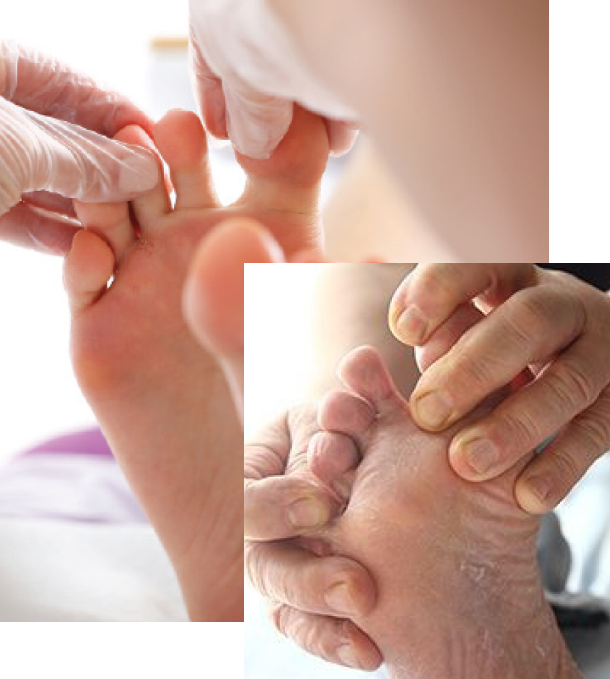
Nail & Skin Disorders of the Foot: Diagnosis & Treatment
The health of your nails and skin is integral to overall foot wellness. Fungal infections, ingrown toenails, calluses, warts, dryness, or bacterial invasions can cause pain, limit activity, or lead to deeper infections. At Dr. Michele Selsor’s Pinellas Park clinic, we provide expert dermatologic foot care integrated into our comprehensive podiatry practice.
Diagnostic & Evaluative Steps
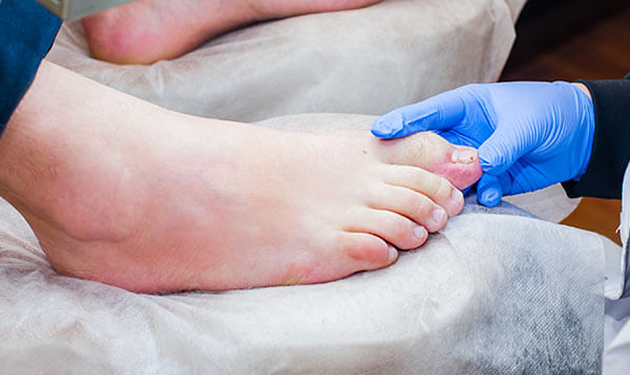
History taking & symptom review
Duration, spread, associated pain, treatments used.
Risk factors: communal surfaces, moisture, footwear habits.
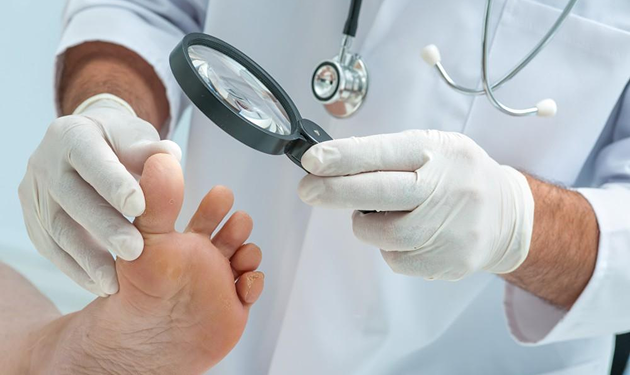
Physical exam & microscopy
Close inspection of nails, skin texture, margins, discharge.
Nail clippings or scrapings for KOH prep, fungal cultures, biopsy if needed.
Assessment of vascular supply and any comorbidities (diabetes, peripheral vascular disease).
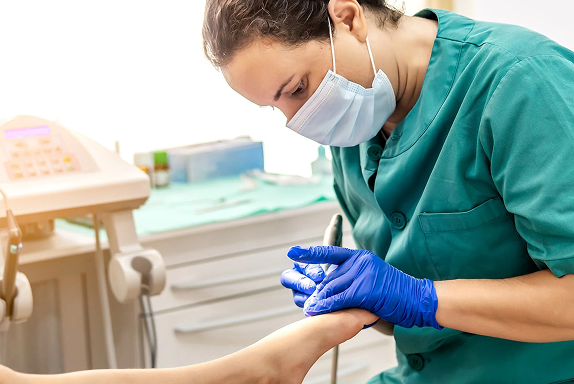
Common Conditions Treated
- Fungal (onychomycosis): Discolored, thickened, brittle or separated nails.
- Ingrown toenails (onychocryptosis): Nail edge grows into skin, causing pain, swelling, infection.
- Corns & calluses: Thickened skin from pressure or friction.
- Plantar warts (verrucae): Viral growths on the sole, sometimes painful.
- Eczema, dermatitis, dry/cracked skin, fissures.
- Bacterial infections, paronychia (nail fold infection).
Treatment Modalities
Conservative & topical options
1
- Antifungal creams, lacquers, or medicated nail varnishes.
- Oral antifungal therapy (when appropriate).
- Proper trimming and mechanical debridement.
- Relief of pressure, use of cushioning pads, correction of footwear.
- Moisturizers, urea or keratolytic creams for cracked skin.
Procedural interventions
2
- Partial or total nail avulsion under local anesthesia.
- Chemical matricectomy (destroying problematic nail root).
- Cryotherapy, laser or electrosurgical wart removal.
- Debridement of thick callus or corns.
- Skin grafting for severe fissures or ulcerated skin in complex cases.
Preventive care & maintenance
3
- Routine surveillance, especially in diabetic or immunocompromised patients.
- Moisture control (keep skin dry), regular inspections.
- Use of properly fitting, breathable footwear.
- Patient education (avoid self-cutting, pick the right sanitizing foot products).
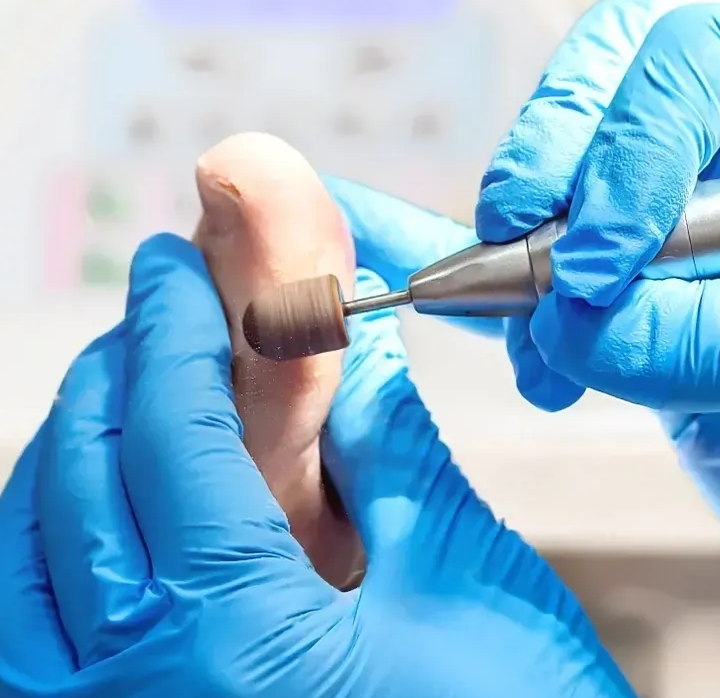
Regional & Practice Considerations
- n Florida’s humid environment, fungal infections and skin maceration are more common. Our Pinellas Park clinic is well-versed in detecting and treating them early.
- Many patients in the Gulf Coast and Tampa Bay region walk barefoot indoors or use communal spaces (pools, showers) increasing exposure risk.
- The practice address (7744 66th St N, Pinellas Park) is centrally located to serve Pinellas County residents needing accessible dermatologic foot care drmicheleselsor.com+1.
If nails are thickening, changing color, or causing pain—or skin is cracked, itchy or irritated—don’t wait. Contact us to schedule a foot dermatology exam and obtain a tailored care plan for healthy, comfortable feet.
Swift
Treatment now available
Are you tired of dealing with pesky warts? We at Michele L. Selsor Clinic in Pinellas Park are very excited to announce that we have a brand new and effective treatment for surface based skin lesions, primarily warts.
Plantar warts; a common and stubborn Viral Infection
“Plantar” means “Of the sole” in Latin. Unlike other types of warts, plantar warts are typically quite painful as the pressure from walking and standing forces them to grow into your skin. Like all warts, Plantar warts are caused by the human papillomavirus (HPV) virus, specifically types 1, 2, 4, 60, and 63. Underneath the skin, the wart can have finger-like roots that reach down and grow, making them very difficult to treat effectively from the surface.
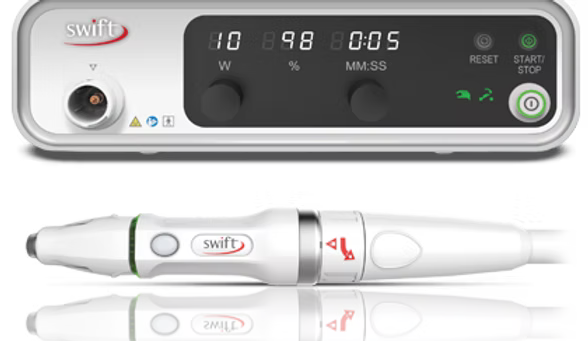
What is Swift?
Swift is a cutting edge, FDA Cleared technology that has proven to be highly effective in the removal of plantar warts. It delivers low dose microwave energy through a specialized probe that targets and effectively treats the underlying HPV virus by stimulating a natural immune response in the body. We like to say that we’re addressing the root cause; not the symptom.
How effective is Swift?
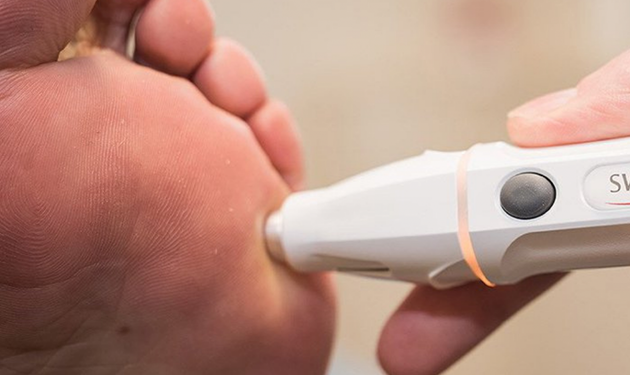
What to Expect?
Swift protocol involves between 3 and 4 treatments, spaced 4 weeks apart; aligning with the body’s natural immune cycle. Each treatment lasts only 5-10 minutes and is what we call a “sock off - sock on” treatment: Limited debridement, no breaking of the skin, no bandages. No home treatment is required between treatments and patients are able to resume daily activities immediately post treatment.
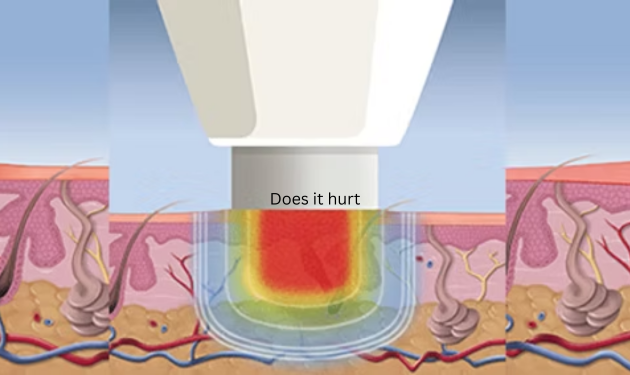
Does it hurt?
While pain is variable and patient/lesion specific, most patients typically feel some level of discomfort as infected tissue temperatures are rapidly elevated over a 2 second dose of energy. The pain immediately subsides following cessation of energy delivery and there is very limited post procedural pain, in fact some report an immediate reduction in pain levels. All patients are about to continue on with day-to-day activities immediately following treatment.
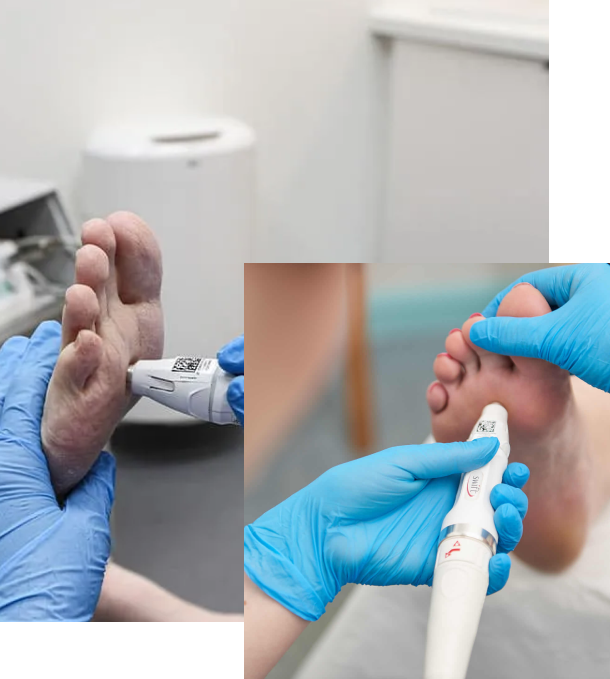
When you should come to see us
- You may get the feeling of “painful pebbles” in your shoes.
- You may experience pain when you compress the sides of the wart.
- You may see a circular flat spot on the skin with a depressed area in the middle.
- They may appear “yellowed” with a crust; small black dots can be an easy give away.
- The lesion on your foot is painful, bleeding, or has changed color.
- Treatments you have tried do not work, and the wart reoccurs or multiplies.
- Discomfort that prevents you from doing regular activities.
- Poor sensation in your feet.
- You are unsure if the lesion is a wart.
